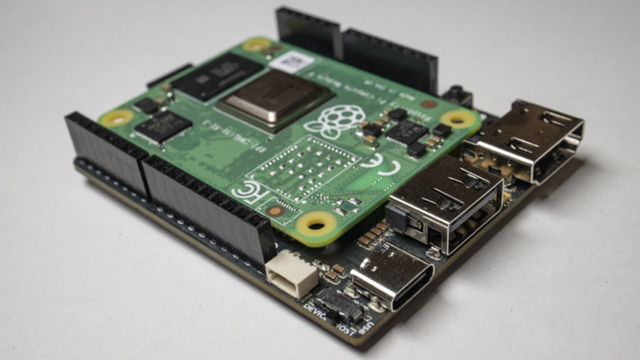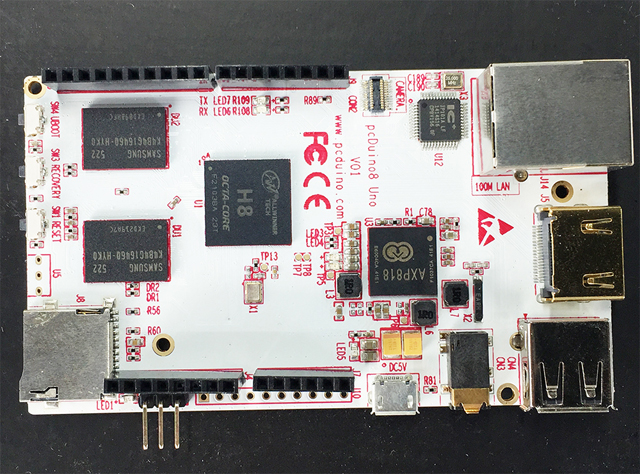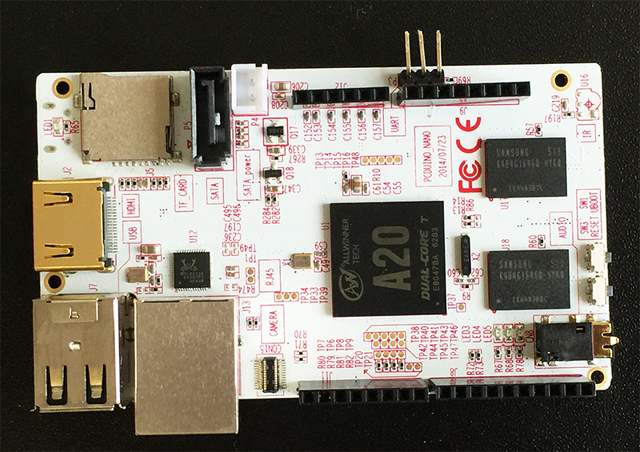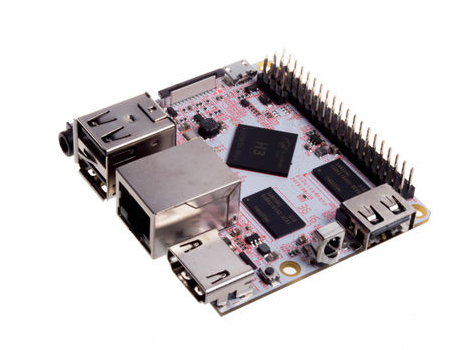Thank you Hondo for the link! First a bit of history...
Raspberry Pi has been making the Compute Module (aka CM) for many years now. The first 3 versions are based on the R-Pi Model A/B, Model A+/B+, and R-Pi 3A/B. They are all pin compatible and are basically about the size of a Memory SIMM Module with an entire R-Pi unit on the Module. As-Is it is useless. You need the Computer Module board to put the SIMM Module into to make it useful, and then the true power of the Compute Module comes out. All the GPIO Pins are pulled out as well as the other R-Pi I/O (USB, Video, Sound, Ethernet, etc.) and are accessible with mouthing board. The GPIO on the mouting board varies as there are 3 different versions of it but in the least one get over 50 GPIO pins to access (as high a 64 on the third revision).
The R-Pi Computer Module 4 is redesigned to have a socket it clips onto the mounting board and is based on the R-Pi 4. Like the R-Pi 4, the R-Pi CM4 has various configurations with the lowest one being $25 and the most expensive is $90. The Board it plugs into is the expensive part. Enter CNX Software - Embedded Systems and their Piunora.
 https://www.cnx-software.com/2020/12/24/piunora-has-the-guts-of-a-raspberry-pi-4
-with-arduino-form-factor-pcie-socket/
https://www.cnx-software.com/2020/12/24/piunora-has-the-guts-of-a-raspberry-pi-4
-with-arduino-form-factor-pcie-socket/ The Piunora gives the Raspberry Pi CM4 an Arduino Uno pin out along with an HDMI Port, USB, Camera Port and SD Card. Other than the cost, though this would dumb down the R-Pi CM4 with just 24 GPIO (16 digital, 8 analog) like on the Arduino Uno (and Leonardo), I can see this being used for intelligent robotic designs based on the Arduino Uno. With the largest CM4 having 8GB of RAM and 32GB of FlashRAM, this would be a very intelligent and fast system. Comparing the R-Pi with the Arduino alone, the Arduino is about 16MHz while the R-Pi CM4 Module is 1.8Ghz or about 120X faster than the Arduino.
Using the I2C and/or SPI Serial Protocols, one can wire up a bunch of serial devices and sensors in parallel on the serial bus. Limiting one's sensors onto the Serial Port, one can use the rest of the GPIO to activate motors/servos, LEDs and relays to make the robot move according to the program. With 8GB of RAM and 32GB of FlashRAM for storage one can collect a lot of data.
Great idea, right?
Well, years before, LinkSprite created the PCduino series, an ARM based system like the Raspberry Pi with an Arduino GPIO. It had other things like SD storage and system loading, Ethernet, USB, HDMI Video, Audio and SATA. With an ARM A20 Dual Core CPU at 1GHz and 1GB of RAM, it can stand on its own as an Arduino that runs Linux like the R-Pi.
The most Arduino like of the PCduino systems are the PCduino3 and PCduino8 with the Arduino Uno form factor. Oddly, the PCduino8 has an 8core H8 CPU but does not have the SATA drive port, while the lower PCduino3 does. The PCduino3nano-lite does not have the IR receiver and FlashRAM, the PCduino3nano has them.

PCduino8:
https://www.linksprite.com/pcduino8-uno/ 
PCduino3nano:
https://www.linksprite.com/linksprite-pcduino3-nano/ PCduino3nano-Lite:
https://www.linksprite.com/linksprite-pcduino3nano-lite/ I have 2 PCduino4nano, and is built similar to an Orange Pi Mini/Lite board though the GPIO functions like the Arduino. It uses the H3 ARM QuadCore CPU instead of the A20 of the PCduino3 series. As tested lightly when I first got them, they seem to work as advertised, even though the GPIO of the PCduino4 is built like the Raspberry or Orange Pi with 2 rows of parallel male pins instead of style the Arduino or PCduino3 uses. (The PCduino1 also uses the Arduino style GPIO.) There is a review of the PCduino4nano on this forum. Link to be posted later.
 https://www.linksprite.com/pcduino4-nano/
https://www.linksprite.com/pcduino4-nano/ The power of the two systems are comparable, with dual, quad and octa core CPUs running between 1GHz and 2GHz. Price on the other hand is another matter. A real Arduino Uno/Leonardo (from Italy) and not a clone would go for about $40; a Clone Arduino goes for about $10 and up (seen them as low as $6 on ebay). The Piunora I an guessing goes for over $120 on the high end using the most expensive and powerful R-Pi CM4 which costs $90. Using the bottom entry R-Pi CM4 and I am guessing that the cost would be about $50, with $25 for the low end R-Pi CM4. The cost of the PCduinos? I received my PCduino4s for under $20 each (around $17). I seen the PCduino3 series go for about under $30. I have not seen a PCduino8 in the wild yet but I would guess it is between $40 and $75.
Is it worth it though? That depends on what your needs are. Arduino GPIO is highly standardized for many applications. If you need large data acquisition with Arduino based sensors and large program apps to do this kind of work with, this would be fine to do with. If your needs are more moderate and less data driven or program control, then the Arduino would be the better option.
 Pages: 1
Pages: 1
 Pages: 1
Pages: 1
 Pages: 1
Pages: 1
 Pages: 1
Pages: 1